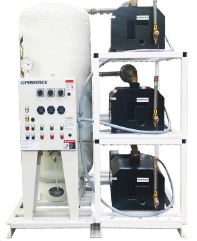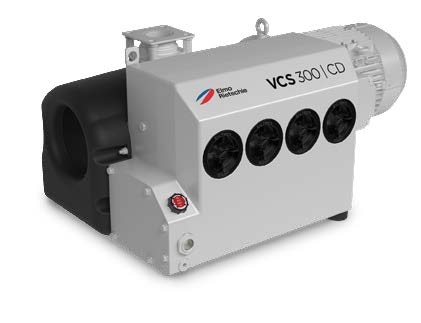What Is A Medical Vacuum Pump?

To answer the question of what a medical vacuum pump is, we first have to answer the question of what a regular vacuum pump is.
A vacuum pump is an industrial device that removes gases and liquids from enclosed spaces. The purpose of this is to create a vacuum or to deliver a steady stream of gas. Hence why the equipment is called a vacuum pump.
Many times people refer to a compressor and a pump as the same thing. As you well know, this isn’t really true. A pump moves liquid or gas from one place to another. A compressor, on the other hand, creates a smaller volume out of gas, then moves it somewhere else.
How Are Medical Vacuum Pumps Different?
Medical vacuum pumps keep medical professionals safe from potentially harmful substances. These vacuum pumps are used within hospitals, vet clinics, and medical clinics at large. Vacuum Pumps can be used for applications such as:
- Draining wounds
- Lung Draining
- Collection and removal of fluids
- Wound Draining
- Tube Cleaning
- Dedicated waste anesthesia (WAGD) systems
Much like medical-grade air compressors, medical vacuum pumps must be NFPA99 compliant. This type of compliance dictates that contaminants never come into contact with patients seeking medical care.
It is important to use NFPA99 equipment and find ASSE 6040 Certified technicians who are able to correctly service these systems. Especially if no one within your maintenance team is qualified.
Common types of Medical Vacuum Pumps
Dry Claw Pump
Dry claw vacuum pumps have two rotors that continually rotate within an oil free chamber. While rotating, these rotors never come into contact with each other eliminating internal wear. The rotation draws gas from the suction side to the pressure side creating pressure which is discharged through a silencer to atmosphere. The dry claw vacuum pump design offers excellent durability and efficiency.

Rotary Vane Pumps
Rotary vane pumps have a series of vanes that are mounted to a rotor located eccentrically within a cavity. As the rotor turns, centrifugal force extends the vanes from their slots creating cells pulling air into the pump which is compressed then discharged to atmosphere in oil free vane pumps or, discharged into the exhaust box/oil separator system on oil flooded vane pumps.
- A thorough evaluation of the application is required before deciding which type of medical vacuum pump system to use.

Contact Us
Choosing the right vacuum pump for your application can be difficult. While we have a blog post on how to choose the right pump for you, we still advise that you seek the help of a specialist to make sure that your pump will do everything it needs to.
If you have more questions on which medical vacuum pump you should be using, please contact us by email or phone. We’d be happy to help you with your selection!